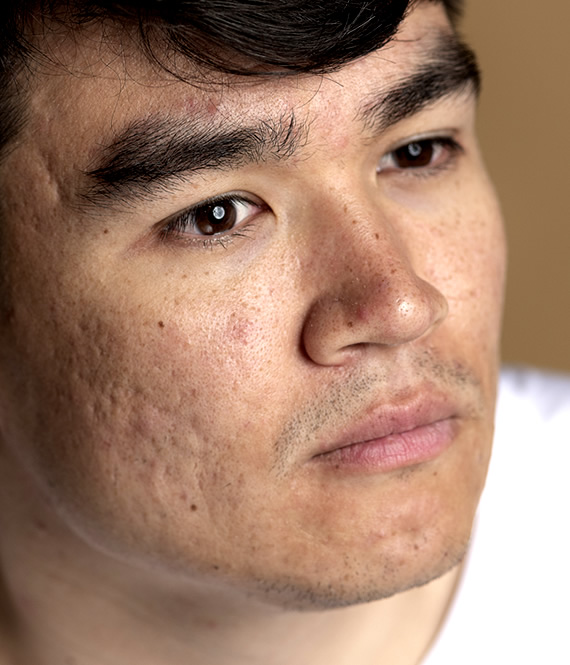
FUE vs. FUT: Which Hair Transplant Technique Is Right For You?
We recommend helpful products in our articles. Read our full disclosure here. The content on this website is not intended to be a substitute for professional advice, diagnosis, or treatment.
For those struggling with hair loss, hair transplant surgery has become a popular and effective solution.
However, choosing the right hair transplant technique can be a daunting task.
In this blog post, we’ll explore two commonly used techniques: Follicular Unit Extraction (FUE) and Follicular Unit Transplantation (FUT).
By understanding the key differences between these methods, you’ll be better equipped to make an informed decision about which technique is the best fit for you.
So, if you’re ready to learn more about FUE and FUT, their respective benefits and drawbacks, as well as the factors to consider when selecting the most suitable technique for your hair transplant needs, let’s dive in!
FUE Explained
FUE is a hair transplant method that involves extracting individual hair follicles straight from the donor area and transplanting them to areas experiencing hair loss.
Unlike FUT, it doesn’t require removing a strip of scalp tissue.
Instead, tiny punches are used to extract hair follicles one at a time, leaving minimal scarring.
FUE advantages compared to other techniques
Minimal scarring
This transplant technique leaves tiny, dot-like scars that are less noticeable than the linear scar left by FUT.
This makes it a preferred option for those who prefer to wear their hair short.
Natural-looking results
Since individual hair follicles are extracted and transplanted, FUE makes precise placement possible, resulting in hair growth that looks natural.
Less discomfort and faster recovery
FUE is a less invasive procedure as well, typically causing less discomfort and faster healing than other techniques.
Patients can generally resume doing their normal activities within only a few days.
Potential drawbacks of FUE
Longer procedure time
FUE can be a time-consuming procedure, especially for larger transplant sessions.
It requires meticulous extraction of individual follicles, which can extend the overall duration of the surgery.
Higher cost
Due to the complexity and time involved, FUE tends to be more expensive than other hair transplant techniques.
Who Can Have a FUE procedure?
FUE is a popular African American hair transplant method but also generally suitable for individuals who:
- Have sufficient donor hair density: a successful FUE procedure relies on having an adequate supply of healthy donor hair to be transplanted.
- Desire a shorter hairstyle: as FUE leaves minimal scarring, it’s a preferred technique for those who wish to wear their hair short or with shorter hairstyles.
- Have smaller hair loss areas: FUE is particularly effective for treating smaller areas of hair loss rather than covering extensive baldness.
By understanding the technique, its benefits, and the ideal candidates, you can better determine if FUE is the right hair transplant technique for you.
FUT Explained
FUT, on the other hand, is a hair transplant method that involves removing a strip of skin from the back of the scalp, dividing it into small individual grafts or bundles, and transplanting them to areas of balding or thinning hair.
The extracted hair follicles are then transplanted into recipient sites, where they regrow to produce new hair.
FUT hair transplant advantages
High success rate
FUT is one of the most established hair transplant techniques, with a high success rate and long-term viability of transplanted hair.
Large areas of coverage
FUT also allows for a larger number of grafts to be transplanted in a single session, making it an effective treatment for advanced stages of hair loss.
Cost-effective
FUT is generally less expensive than other hair transplant techniques.
Potential drawbacks of FUT
Linear scar
The FUT method leaves a linear scar on the scalp, which may be visible in shorter hairstyles.
Longer recovery time
The recovery time is longer than other procedures, and patients may experience discomfort, swelling, and scabbing for several days after the surgery.
Who Can Have a FUT procedure?
FUT is generally recommended for individuals who:
- Require larger areas of coverage: FUT is ideal for individuals who suffer from extensive hair loss and require a larger number of grafts for transplantation.
- Have enough donor hair: In general, FUT requires a larger donor area, but individuals with adequate hair in the donor area can benefit from the technique.
- Don’t mind a linear scar: FUT may be a better option for individuals who don’t mind a linear scar or who plan on growing their hair long enough to cover the scar.
The discussion above should help you determine if FUT is the right hair transplant technique for you.
Choosing The Best Hair Transplant Technique
Selecting the most suitable technique for your hair transplant depends on various factors.
- Personal preferences: Consider your hairstyle preferences and ability to conceal any potential scarring.
- The extent of hair loss: FUT is generally recommended for individuals requiring extensive coverage, while FUE can be ideal for smaller areas of hair loss.
- Donor area condition: Assess the density and quality of your donor hair to determine if you meet the requirements for either technique.
Consulting with a skilled hair transplant specialist can help you make an informed decision and choose the technique that best addresses your specific hair transplant needs.
Conclusion
Both FUT and FUE techniques have their advantages and considerations.
The former allows for larger areas of coverage and is generally more cost-effective, but it does result in a linear scar and requires a longer recovery period.
On the other hand, the latter leaves dot-like scars, allows for greater flexibility in choosing the donor area, and may have a faster recovery time, but it tends to be more expensive.
When deciding on the best technique for your hair transplant needs, consider factors such as your personal preferences, the extent of hair loss, and the condition of your donor area.
Regardless of your choice, if you’re considering a hair transplant, it’s crucial to seek professional advice and thoroughly discuss your options with a trusted specialist.
They’ll assess your specific situation, recommend the most suitable technique, and guide you through the entire process to help you regain your confidence and achieve natural-looking, fuller hair.
"We love to research problems, examine studies, analyze solutions, and share with you ideas that make life healthier. You can learn about us and our editorial standards here. Have suggestions or feedback to share? Send us a message!."













Leave a Comment